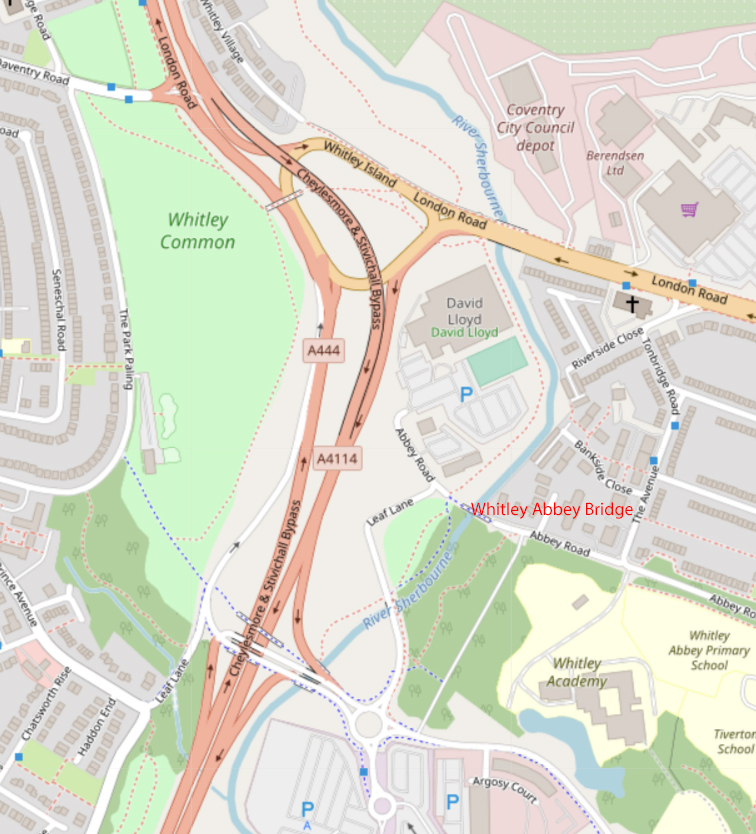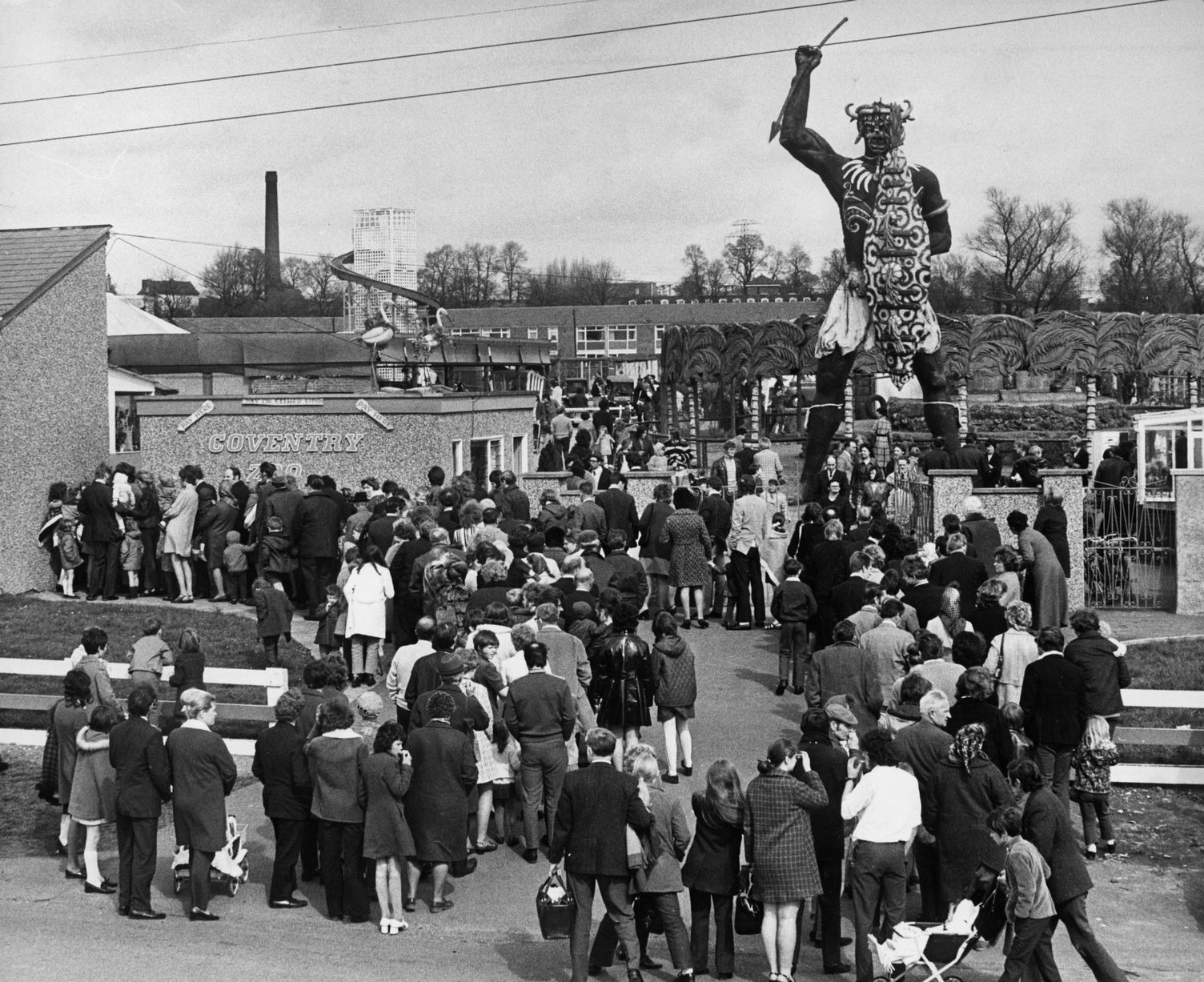Today we have the fifth episode of Peter Walter’s series of lockdown walks “being a compendium of idle facts, hidden places and meaningless historiana gathered on walks within easy striding distance of the writer’s abode – and beyond”.

For a place that the Saxons called ‘white wood clearing’, it’s fitting that at the heart of Whitley still lies a well-wooded river valley.
Here, where the River Sherbourne begins to say its farewells to Coventry, it passes deep in a cutting through a strip of broad-leaf woodland, boasting some of the biggest trees in the city. But you’d be forgiven for missing it completely, for today’s Whitley spells roundabouts, traffic lights and flyovers, well-nigh obscuring its earlier contours.
It’s always been a hidden place. Flanked by its fellow hamlets of Shortley and Pinley, it lay outside the medieval city, its common lands fought over by landowners and common folk and its scattered buildings offering a refuge to various desperados.
Back in the early 1320s, from an old house at Shortley, a wizard named John of Nottingham plotted with wealthy city merchants to murder the Benedictine Prior of Coventry by sticking pins in waxen images.
Nearly sixty years later, John Ball, the renegade priest who was one of the leaders of the Peasants’ Revolt, was arrested while hiding in a ruined house somewhere here and hauled off to be butchered in his home town of St Albans.
Even the old main road to London, that might have put it on the map a bit more, was shifted in the 1820s to bypass its traditional river crossing. The mill that stood there, between road and water, has passed into history, but the old stone bridge, built in the 1760s, still fords the river on a road to nowhere.

From the north, the riverside footpath approaches the old bridge from modern London Road, running past what’s now a sports and leisure centre but was once the site of Coventry Zoo, an establishment that entirely fits that ‘bit different’ nature of the area.
Opened in the mid-1960s and mercifully shut down in 1980, the zoo in its fifteen years of life became a model of how not to do this. It offered children rides on its resident hippo, a practice ended when the beast turned on its keeper and almost killed him. For a few years it tried out performing dolphins named Chipper and Nero, alongside big cats and an Indian elephant called Cindy. And it suffered repeated escapes, notably by a bear which (from memory) was kept in an old railway carriage.

Now the only roaring you can hear comes from traffic on the flyover above, yet even as you leave behind the last flyover bridge and contemplate the open grassy expanses of Whitley Common in front of you, you can’t escape a dark old memory or two. On a flattened, circular mound close to the edge of the Common stands a spreading oak tree. This was Coventry’s public execution site, where, in 1831, 19-year-old Mary Ann Higgins went to the gallows for murdering her uncle, the last person in England to be taken to their execution by cart.
Afterwards, it was said, her ghost haunted the old Common for many years. I suspect the odd bear’s still knocking around too.
